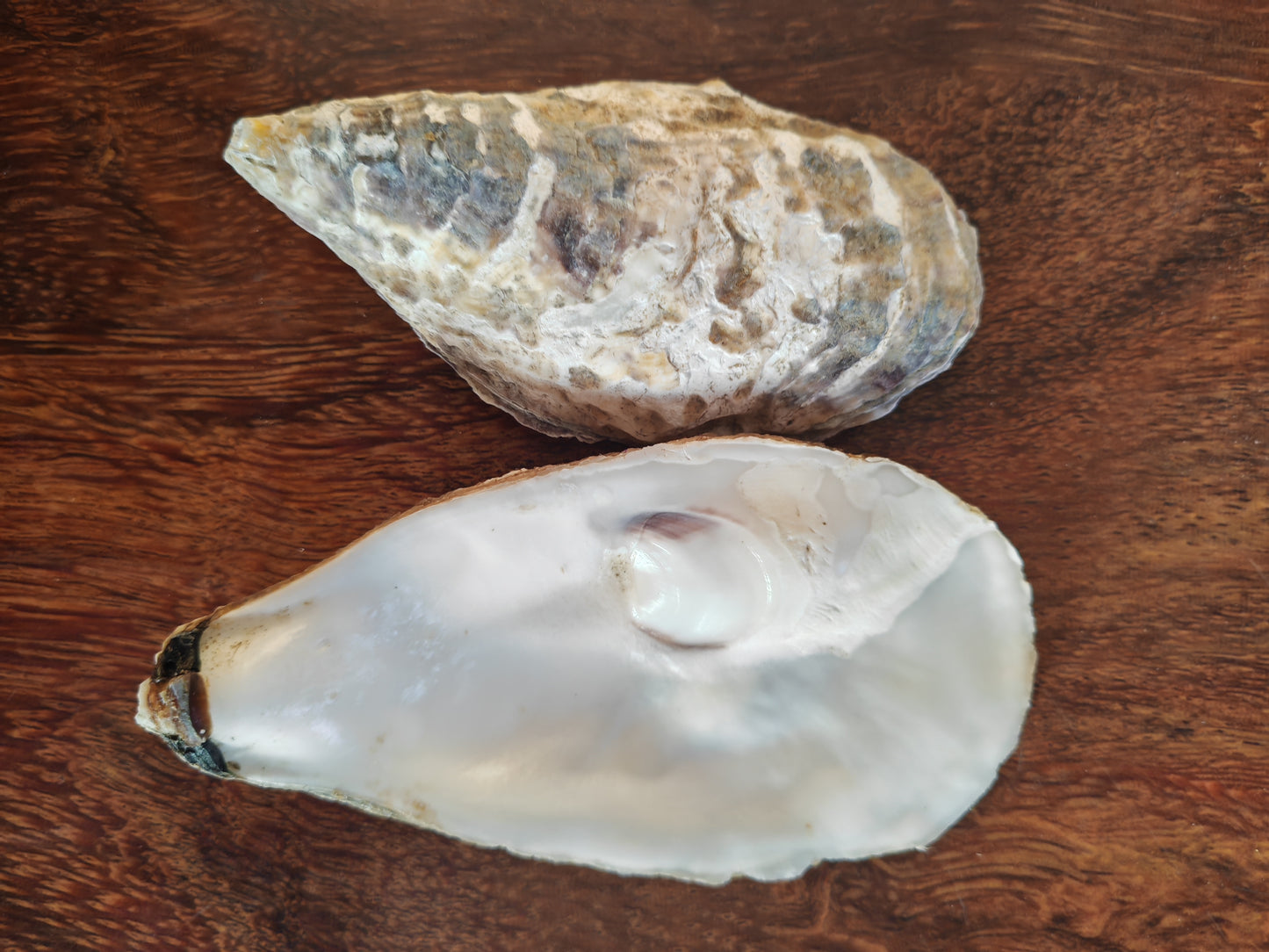1
/
of
1
1000 in stock
Tray - Oyster shell
Tray - Oyster shell
Regular price
$1,200.00 USD
Regular price
$1,300.00 USD
Sale price
$1,200.00 USD
The Application of Oyster Shells
1. Application in Traditional Chinese Medicine (TCM)
Efficacy and Indications
In TCM, oyster shells are salty and slightly cold in nature, and they enter the Liver Meridian and Kidney Meridian. They have the effects of calming the liver and suppressing yang, softening hardness and resolving masses, astringing and securing, and detoxifying.
- They can be used to treat dizziness, distending pain, tinnitus, etc., caused by hyperactivity of liver yang, as well as scrofula caused by phlegm-fire stagnation.
- When calcined, oyster shells have an astringent and securing effect, which can be used for symptoms such as spontaneous sweating, night sweats, spermatorrhea, and involuntary emission.
- In addition, oyster shells also have effects such as sedation and hypnosis, relieving asthma and cough, promoting diuresis and reducing edema, astringing to stop bleeding, and detoxifying to heal sores.
Component Functions
Oyster shells contain calcium carbonate, calcium phosphate, calcium sulfate, and a variety of trace elements (such as magnesium, sodium, strontium, iron, and aluminum). They also contain proteins and 17 kinds of amino acids.
2. Application in Oyster Culture
As an Attachment Substrate
Oyster larvae need to attach to a certain object to grow. The surface of oyster shells is rough, with many tiny holes and unevenness, making them an ideal attachment substrate for oyster larvae. For example, in the "Oyster Barrier Project" in New York, USA, recycled oyster shells are used as the substrate for oyster larvae, providing a good growth environment for them.
Improving the Cultivation Environment
Oyster shells can absorb organic substances and heavy metals in water to reduce water pollution. They can also form a three-dimensional structure, increase water turbulence and oxygen exchange, improve water quality, and facilitate the growth of oysters.
3. Application in Laver Culture
Providing a Growth Substrate
The growth process of laver is relatively special, and its life cycle involves the alternation of two forms. Mature laver thalli produce carpospores, which form zygotes through seawater flow and burrow into shells to transform into filamentous bodies. In China, most laver cultivation uses clam shells or oyster shells as the culture substrate, and oyster shells can provide a necessary environment for the growth of laver filamentous bodies.
Promoting Larval Attachment
In laver cultivation, oyster shells are used as attachment substrates. After treatment, the conchospores of laver attach to the oyster shells, and then the oyster shells are placed in suitable sea areas to allow laver larvae to attach and grow smoothly.

contact us


